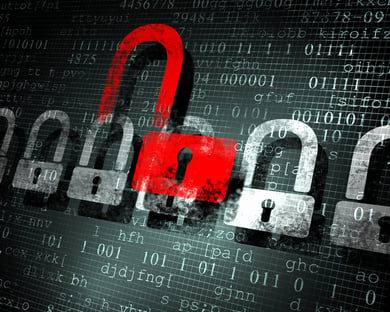
Ransomware
It may not be news to you that ransomware is on the rise, but the numbers may leave you shocked. In 2020 alone, there were close to 300 million ransomware attacks worldwide.1 The cost of ransom payments demanded by hackers are also increasing in tandem with the increase in attacks. According to a recent projection, the global annual cost of ransomware attacks will touch $20 billion by the end of 2021.2
Offerings like ransomware-as-a-service have made it easier for criminals with little technical knowledge to become threat actors. These attackers are less predictable and seem to lack a code of ethics. For example, groups in the past had lists of organizations they wouldn’t attack, such as cancer treatment facilities. That’s often not the case anymore.

A ransomware attack can affect any organization, regardless of size or industry. However, SMBs are the most vulnerable since cybercriminals count on these businesses to lack the resources to battle cybercrime or the IT teams to frequently evaluate cybersecurity measures. Even though SMBs continue to be disproportionately affected by these nefarious attacks, reporting and notifications rarely make the news unless a huge corporation experiences a breach.
With ransomware expected to hit businesses every 11 seconds2, always remember that it isn’t a question of IF but rather WHEN your business will come under attack. Keep in mind that with the right security solutions and measures in place, your business won’t have to experience a devastating breach. But first, there are a few things you should know if you experience a ransomware attack.
Before Reacting to a Ransomware Attack, Remember:
- The FBI advises against paying a ransom because spending money does not guarantee the hackers will share the keys to decrypt your data. While the FBI is an American organization, they raise a good point for businesses all across the globe.
It doesn’t make any sense to place your trust in cybercriminals who have already demonstrated that they aren’t afraid to break the law and take advantage of you for financial gain. However, many businesses find themselves in this situation because they don’t have sufficient security, backup or compliance measures, and are desperate to get their data back.
Keep in mind that another reason the FBI advises against giving in to ransomware demands is that you are encouraging criminals to conduct further attacks. If nobody ever paid ransom, it’s likely there wouldn’t be as many ransomware attacks. Criminals would have to find new ways to make money and would disregard ransomware as a viable venture.
- In case you fall victim to a ransomware attack and have no option other than paying, “ransomware negotiators” are available for hire.
In ransomware negotiations, the most crucial moment occurs long before the victim and hackers discuss the ransom. This is because by the time both sides start to discuss, hackers have already gained considerable control over the organization’s network by encrypting access to sensitive business data and other digital assets. The more data they encrypt, the greater the negotiating power they have.
So, even before you begin negotiations, you need to know how much data has been compromised and what negotiating methods have been employed in the past by the criminals. Professional ransomware negotiators can help at this stage. Although a ransomware negotiation rarely results in a ransom demand being totally withdrawn, it can significantly bring down the asking price.
- Victims of ransomware should expect the following:
- The data will not be erased in a trustworthy manner. It will be sold, improperly handled or stored for future extortion attempts.
- Multiple parties would have handled the exfiltrated data, making it insecure. Even if the hacker deletes a large portion of the data once the ransom is paid, other parties who had access to it may have made duplicates to make payment demands later.
- Before a victim can respond to an extortion attempt, the data may get leaked either intentionally or inadvertently.
- Even if the threat actor explicitly promises to release the encrypted data after payment, they may not keep their word.
Make Your Move Before It’s Too Late
You’re probably wondering what steps you can take right now to combat the menace of ransomware targeting vulnerable systems. Our best recommendation is layered security.

Since no security technology or measure is flawless or guaranteed, layered security assumes that attackers will infiltrate different layers of an organization's defenses or have already done so. The goal of this approach is to provide multiple security measures so that if an attack gets past one security tool, there are others in place to help identify and stop the attack before your data is stolen.
If the idea of protecting your business is overwhelming, don’t worry. You don’t have to do it alone. Collaborate with an experienced partner like us to do the heavy lifting for you. Our cybersecurity expertise and knowledge will help you pave the way to a more secure future. To get started, contact us at koresales@kavaliro.com today!
Sources:
- Statista
- Cybersecurity Ventures
Kevin Drinan – CMMC-RP Managed IT Services Division
Article curated and used by permission.